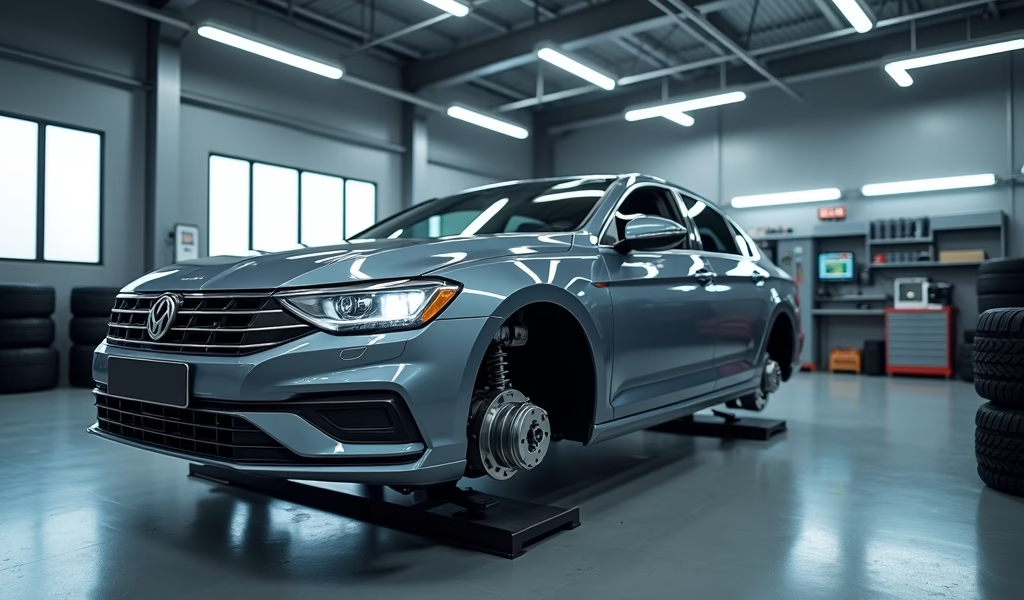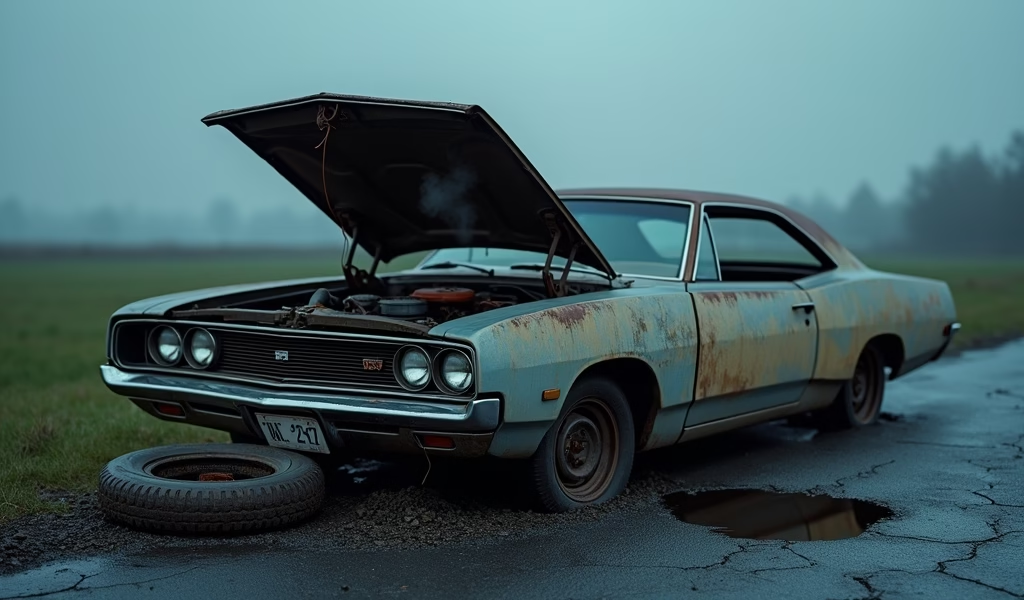Overview
This guide provides a methodical approach to purchasing a reliable used car through defining your needs and budget, researching models, checking vehicle history, conducting thorough inspections, test driving, getting professional assessments, negotiating fairly, and finalizing the purchase safely. The article emphasizes that finding a dependable used vehicle isn’t about luck but rather preparation, patience, and attention to detail to avoid costly repairs and ensure years of trouble-free driving.
Table of Contents
- Finding a Safe and Reliable Used Car for Your Budget
- Define Your Needs and Budget
- Research Reliable Models and Common Issues
- Check the Vehicle History Report
- Perform a Thorough Visual Inspection
- Take a Proper Test Drive
- Get a Pre-Purchase Inspection
- Negotiate a Fair Price
- Finalize the Purchase Safely
- Conclusion
- Frequently Asked Questions
Finding a Safe and Reliable Used Car for Your Budget
Finding a safe and reliable used car for your budget might seem like navigating a minefield, but with the right approach, it’s absolutely achievable. As a mechanic who’s seen both dream cars and nightmares roll through my shop, I can tell you that a smart purchase starts long before you hand over your hard-earned cash. The used car market offers tremendous value when you know what to look for—and what to avoid.
Today’s vehicles are built to last longer than ever before, with many models capable of surpassing 200,000 miles with proper maintenance. This means a well-chosen used car can provide years of dependable service without breaking the bank. But the key word here is “well-chosen.” Let’s walk through how to make sure the car you’re eyeing won’t end up costing you more in repairs than you saved by buying used.
Whether you’re a first-time buyer or looking to replace your current vehicle, this comprehensive guide will equip you with professional insights to make a confident purchase. I’ll share the same advice I give my friends and family when they’re hunting for a quality used car—no mechanic jargon, just straight talk about what matters.
Define Your Needs and Budget
Before you start scrolling through listings, take a moment to honestly assess what you need from your vehicle. Are you commuting daily on highways? Navigating city streets? Hauling kids and their gear to weekend activities? Your actual usage pattern should drive your decision, not the appeal of that sporty two-seater that caught your eye.
Create a realistic budget that accounts for more than just the purchase price. I’ve seen too many folks stretch their finances thin buying a car, only to struggle with insurance, fuel, maintenance, and repairs. A good rule of thumb: your total monthly vehicle expenses (payment, insurance, gas, maintenance) shouldn’t exceed 15-20% of your take-home pay.
Don’t forget to research insurance costs before falling in love with a particular model. Some vehicles cost significantly more to insure than others, even when they’re similarly priced. Insurance companies consider repair costs, safety ratings, theft statistics, and other factors that might not be obvious to buyers.
Consider your long-term plans as well. If you’re expecting family changes or career moves in the next few years, think about how those might affect your vehicle needs. A car that perfectly fits your life today might become impractical sooner than you think.

Research Reliable Models and Common Issues
Once you’ve outlined your needs and budget, it’s time for targeted research. Not all vehicles are created equal when it comes to reliability. As a mechanic, I can tell you that certain makes and models consistently require fewer repairs over their lifetimes, while others seem to be frequent flyers in repair shops.
Start by checking reliability data from trusted sources like Consumer Reports and J.D. Power. These organizations collect real-world reliability information from thousands of vehicle owners. Pay special attention to models that maintain high reliability ratings even as they age—these are your potential diamonds in the rough.
Next, dive deeper into specific issues known to affect your target models. Every vehicle has its quirks, and knowing them ahead of time gives you tremendous advantage. For example, certain engines are prone to head gasket failures at specific mileages, while some transmissions might develop shifting problems after 100,000 miles.
Online owner forums are goldmines for this information. The people who drive these vehicles daily will often discuss common problems, maintenance costs, and real-world fuel economy that might differ from official figures. They’ll also share which model years to avoid and which ones represent the sweet spot for reliable used cars.
Don’t overlook safety ratings. The Insurance Institute for Highway Safety (IIHS) and National Highway Traffic Safety Administration (NHTSA) provide crash test results for most vehicles. A car with top safety ratings might cost slightly more upfront but could literally save your life in an accident.
Check the Vehicle History Report
Never—and I mean never—purchase a used car without reviewing its vehicle history report. These reports, available through services like Carfax and AutoCheck, reveal crucial information about a car’s past that might not be visible during inspection.
A comprehensive history report will show recorded accidents, title information, service records, ownership history, and sometimes even the vehicle’s original window sticker. This data helps you verify the seller’s claims and spot potential red flags.
Be particularly wary of:
- Salvage titles, indicating the vehicle was declared a total loss by an insurance company
- Odometer discrepancies that might suggest tampering
- Flood or fire damage that could cause persistent electrical problems
- Multiple accidents, especially those labeled as “severe”
- Frequent ownership changes in a short period (potential sign of recurring problems)
While a minor fender bender shouldn’t necessarily disqualify an otherwise well-maintained vehicle, major structural damage could compromise safety and lead to costly issues down the road. Using the VIN (vehicle identification number), you can often check if a vehicle has any open recalls that need to be addressed as well.
Remember that history reports aren’t perfect—they only include incidents that were reported to insurance companies or repair facilities that share their data. That’s why the next steps are equally important, even with a clean history report.
Perform a Thorough Visual Inspection
Now comes the hands-on part. A systematic visual inspection can reveal much about a car’s condition and how well it’s been maintained. Start by examining the vehicle in daylight on a dry day—rain and poor lighting can hide important flaws.
Begin with a slow walk around the exterior, looking for inconsistent paint color or texture that might indicate repair work. Check panel gaps for evenness, as irregular spacing often suggests collision repairs. Inspect door sills, wheel wells, and underbody areas for rust, which can spread quickly once established.
Open and close all doors, the hood, and trunk. They should operate smoothly without unusual noises. Check that all lights work properly, including turn signals, brake lights, and interior illumination.
Inside the vehicle, inspect:
- Seat comfort, adjustment mechanisms, and upholstery condition
- All electronic features (windows, locks, air conditioning, infotainment)
- Dashboard warning lights during startup
- Excessive wear on the steering wheel, pedals, or driver’s seat that might contradict the claimed mileage
Under the hood, even if you’re not mechanically inclined, look for:
- Fluid leaks (dark stains on the ground or engine components)
- Fluid levels and condition (oil should not look excessively dark or contain metal particles)
- Battery condition and terminal cleanliness
- Belt integrity (no cracks or fraying)
- Hose firmness (they shouldn’t feel too soft or brittle)
While inspecting, take note of maintenance items that might need attention soon, such as tires with low tread or brakes that look worn. These aren’t necessarily deal-breakers, but should factor into your negotiation and budget planning.

Take a Proper Test Drive
A test drive is your opportunity to experience how the car actually performs, not just how it looks. But most people don’t test drive properly—a quick spin around the block reveals very little about a vehicle’s true condition. Instead, aim for at least 30 minutes behind the wheel in varied conditions.
Start the engine cold if possible (meaning the car hasn’t been warmed up before your arrival). Listen for unusual noises during startup and watch for excessive exhaust smoke, which can indicate serious engine problems.
During your drive, test the vehicle at different speeds and on various road surfaces. Highway driving reveals different issues than stop-and-go city traffic. Make sure to include hills if available to test the transmission’s upshifting and downshifting.
Pay attention to:
- Steering response (the car should track straight without pulling to one side)
- Brake performance (no pulsation, grinding, or excessive travel before engagement)
- Suspension behavior over bumps (no excessive bouncing or concerning noises)
- Transmission shifting (smooth transitions between gears, no slipping or hesitation)
- Engine performance (consistent power delivery without stumbling)
- Unusual vibrations at different speeds
Don’t be shy about testing features. Turn the air conditioning to maximum, try the heat, test the audio system at various volumes, and ensure all power accessories function properly. Remember, you’re potentially going to live with this vehicle for years—make sure it meets your expectations in every way.
Before concluding your drive, find a safe, level place to park and check for any fluids that might have leaked during operation. Fresh leaks are a warning sign that shouldn’t be ignored.
Get a Pre-Purchase Inspection
Even with thorough research and your own inspection, nothing replaces the trained eye of a professional mechanic. A pre-purchase inspection is the best $100-200 you’ll spend in the car-buying process. It can save you thousands in unexpected repairs and countless headaches down the road.
Choose an independent mechanic rather than one affiliated with the seller. If buying from a private party, you’ll need to arrange to have the vehicle brought to the mechanic’s shop. Most reputable sellers understand this is standard practice and will accommodate the request. If they resist, consider it a red flag.
A good inspection should include:
- Computer diagnostic scan for error codes (even if no warning lights are illuminated)
- Compression or leak-down test to assess engine internal condition
- Thorough undercarriage examination for damage, leaks, and rust
- Brake system evaluation including pad thickness and rotor condition
- Assessment of major components like the transmission, suspension, and steering
Ask the mechanic not just what needs immediate repair, but what might need attention in the next year or so. This information is invaluable for budgeting and can serve as a powerful negotiation tool. A professional inspection report provides objective evidence of the vehicle’s true condition beyond what the seller has disclosed.
Remember that no used car will be perfect—the goal is to identify any significant issues that would make the purchase unwise or substantially affect its value. Minor problems can be addressed after purchase or used to negotiate a fair price.
Negotiate a Fair Price
Armed with research, inspection results, and market knowledge, you’re ready to negotiate. Understanding the vehicle’s true market value is essential, and tools like Kelley Blue Book, NADA Guides, and Edmunds provide reliable pricing information based on condition, mileage, features, and location.
Start by determining the vehicle’s fair market value, then adjust downward for any issues discovered during your inspection or the mechanic’s assessment. Be prepared to walk away if the seller won’t budge on an unreasonable price—emotional attachment to a particular vehicle often leads to overpaying.
When negotiating, remain respectful but firm. Present any concerns as objective facts rather than criticisms. For example, instead of saying “This car has terrible brakes,” try “The brake pads are at 20% and will need replacement soon, which will cost around $300.”
Consider the total cost of ownership, not just the purchase price. A slightly more expensive vehicle that needs no immediate work might be a better value than a cheaper one requiring significant repairs. Focus on finding the best value in a used car rather than simply the lowest price.
If buying from a dealership, be aware that the negotiation often extends to financing terms, trade-in value, and additional products like extended warranties. Keep these elements separate in your mind to avoid confusion, and ensure each aspect represents a fair deal.
Finalize the Purchase Safely
Once you’ve agreed on a price, it’s time to handle the paperwork properly. Requirements vary by location, but generally include:
- Bill of sale documenting the transaction details
- Title transfer signed by both parties
- Emissions or safety inspection certificates if required in your area
- Payment in a secure form (cashier’s check, electronic transfer, or escrow service)
Never pay cash for a vehicle unless you know the seller very well, and be extremely cautious about wire transfers to unknown parties. If financing, ensure you understand all terms before signing, including interest rate, loan duration, and any prepayment penalties.
For private party sales, consider meeting at your bank or credit union, which provides both security and immediate verification of payment. Some DMV offices also offer safe transaction zones specifically for private vehicle sales.
Verify that all promised items are included with the vehicle—extra keys, owner’s manuals, maintenance records, and any accessories that were part of the negotiation. Get all promises in writing, especially if the seller has agreed to fix any issues before finalizing the sale.
Finally, ensure you understand the warranty situation. Dealer-sold used cars sometimes come with limited warranties, while private party sales are typically as-is. If purchasing an extended warranty, read the fine print carefully to understand exactly what’s covered and what isn’t.
Conclusion
Finding a safe and reliable used car for your budget isn’t about luck—it’s about preparation, patience, and attention to detail. By defining your needs clearly, researching reliable models, checking vehicle history, conducting thorough inspections, test driving properly, getting a professional assessment, negotiating wisely, and finalizing the purchase safely, you dramatically increase your chances of driving away satisfied.
Remember that the perfect used car doesn’t exist, but the right one for you does. It’s the vehicle that meets your practical needs, fits your budget, has been well maintained, and doesn’t hide any expensive secrets. Taking your time with this process might feel tedious, but it’s an investment that pays dividends with every trouble-free mile you drive.
The peace of mind that comes from knowing you’ve done your due diligence is worth its weight in gold. And as any mechanic will tell you, the cars we see least often in our shops are the ones purchased by careful, informed buyers who weren’t afraid to ask questions and walk away from red flags.
Happy hunting, and may your next used car be the reliable partner you deserve on the road ahead!
Frequently Asked Questions
What’s the ideal mileage for a used car?
There’s no magic number, but generally look for 12,000-15,000 miles per year of age. More important than the odometer reading is how well the vehicle was maintained and how it was driven.
Should I avoid cars that have been in accidents?
Minor accidents don’t necessarily disqualify a vehicle, but properly repaired cosmetic damage. Avoid cars with structural or frame damage as these can compromise safety and lead to premature wear of components.
How important is the vehicle history report?
Extremely important—it reveals accidents, title problems, service history, and ownership changes that may not be visible during inspection. Consider it an essential investment, not an optional step.
Is buying from a dealer safer than a private seller?
Dealers typically offer some legal protections and possibly limited warranties that private sellers don’t. However, private sales often provide better value and more transparency about the vehicle’s history if you do proper due diligence.
How much should I budget for post-purchase repairs?
Set aside at least $500-1,000 for immediate maintenance and unexpected issues in the first few months. After that, budget about $100 per month for ongoing maintenance to keep your vehicle reliable.

